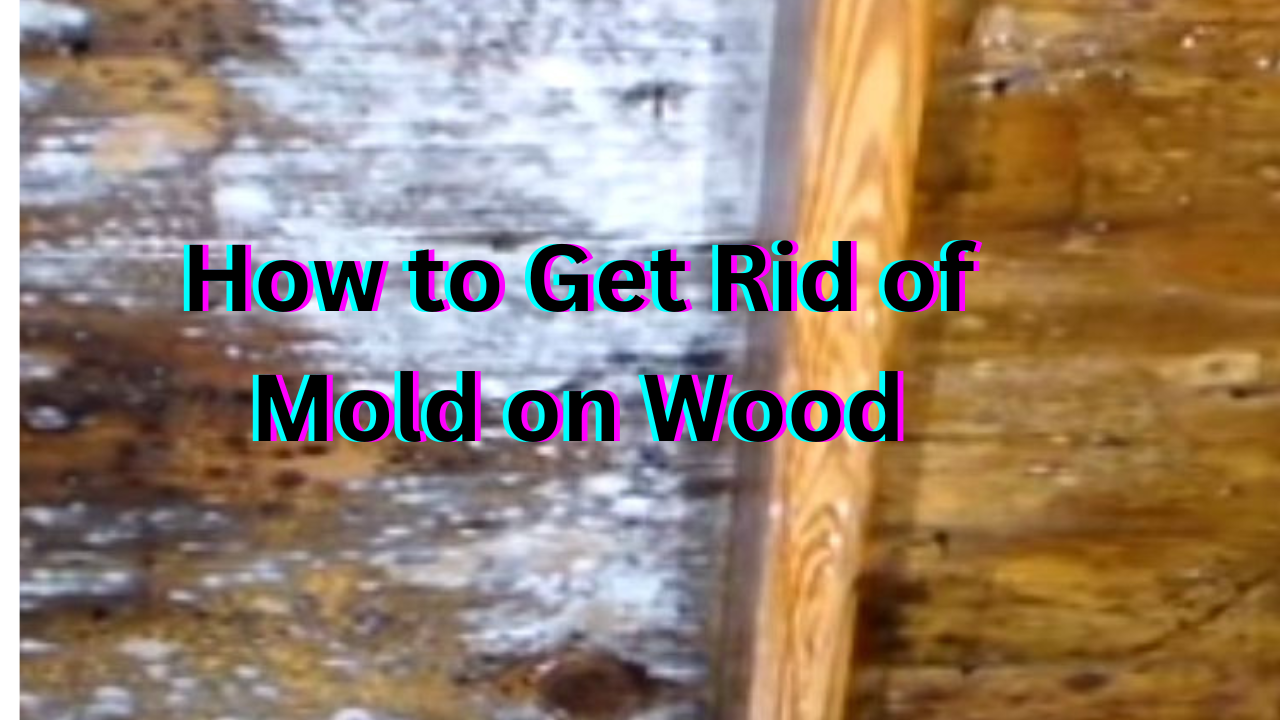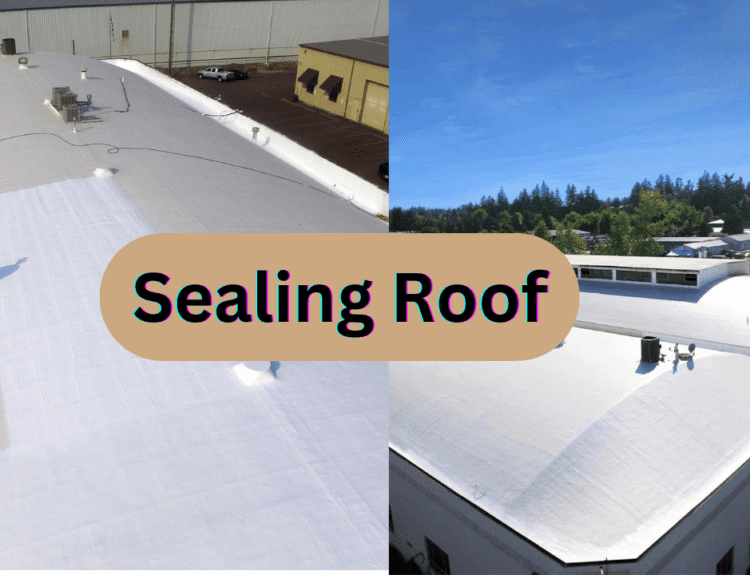Did you know that mold can start to grow on wood within just 24 to 48 hours if moisture is present? That little patch of black or green mold isn’t just unsightly—it can cause structural damage to your furniture, floors, and even your health.
Wood surfaces are a beautiful addition to any home, but they’re also a prime target for mold growth. Whether it’s caused by moisture, leaks, or poor ventilation, mold thrives on wood and can quickly become a serious problem.
In this guide, we’ll show you step-by-step ways to safely and effectively How to Get Rid of Mold on Wood, explain why it happens, and share practical tips for preventing it from coming back.
Causes of Mold on Wood
Mold on wood is primarily caused by excess moisture, which creates the perfect environment for mold spores to thrive. Wood surfaces are particularly vulnerable because wood is a porous, organic material that easily absorbs and retains water. High levels of humidity, often caused by poor ventilation in rooms like basements, bathrooms, or kitchens, can cause condensation on wood furniture, floors, or walls, which encourages mold growth.
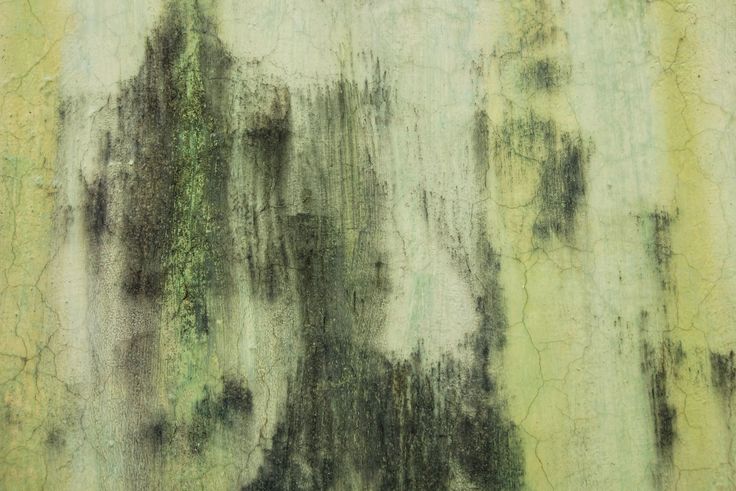
Water leaks from pipes, ceilings, or appliances that go unnoticed or unrepaired can also saturate wood over time, promoting mold growth. Additionally, flooding or prolonged exposure to water can cause severe mold infestations if the wood is not properly dried. Insufficient airflow around wood surfaces prevents moisture from evaporating, allowing mold to take hold and spread. It is important to understand these causes to address the root of the problem and keep the wood free of mold.
Tools and Supplies Needed
List essential tools and materials
- Soft brush or cloth
- Vacuum with HEPA filter
- Vinegar
- Baking soda
- Dish soap
- Hydrogen peroxide or bleach (optional, for non-porous wood)
- Sandpaper (if mold has penetrated deep into wood)
- Protective gear (gloves, mask, safety goggles)
Steps to Remove Mold on Wood
1. Assess the Damage
Before you begin removing mold from wood, it is important to assess the extent of the damage in order to determine the best course of action. Start by identifying whether the mold growth is superficial or deep-seated. Superficial mold usually appears as small spots or streaks on the surface of the wood and can usually be cleaned with household solutions. However, if the mold has penetrated the wood fibers, it may appear darker, spread over larger areas, or emit a foul odor, indicating a more serious problem. In such cases, cleaning the surface alone will not solve the problem, as the mold may continue to grow from within.
Check the condition of the wood to properly assess the damage. If the surface feels soft, spongy, or shows signs of rot, the structural integrity of the wood may already be compromised, and replacement may be necessary. For wood furniture, check joints, edges, and hidden areas where moisture may have gone unnoticed. In larger infestations, such as mold on wooden walls, floors, or beams, the damage may extend beyond what is visible, requiring a professional inspection to ensure there is no underlying structural damage.
By accurately assessing the damage, you can decide whether to clean, sand, or replace the wood. This step saves time and resources, ensuring that you effectively address the mold problem while maintaining the integrity and safety of your home.
2. Safety First
Wear Protective Gear:
- Gloves: Use rubber or latex gloves to avoid direct contact with mold.
- Mask or Respirator: Wear an N95 respirator or mask to prevent inhaling mold spores.
- Goggles: Protect your eyes with safety goggles, especially during scrubbing or spraying.
Ensure Proper Ventilation:
- Open windows and doors to increase airflow.
- Use fans to direct mold spores outside, not into other areas of your home.
Contain the Work Area:
- Seal off the affected space with plastic sheets to prevent mold spores from spreading to other rooms.
Use a HEPA-Filter Vacuum:
- Vacuum the area before and after cleaning to trap loose mold spores safely.
Avoid Mixing Chemicals:
- Never mix cleaning agents like bleach and ammonia, as they can produce toxic fumes.
Dispose of Contaminated Materials:
- Place any moldy rags, cloths, or cleaning tools in sealed plastic bags and discard them properly.
2. Vacuum the Area
Before applying any cleaning solution, start by vacuuming the affected wood surface to remove loose mold spores and debris. Use a vacuum equipped with a HEPA (High Efficiency Particulate Air) filter, as it is specifically designed to capture microscopic mold spores and prevent them from being re-released into the air. Standard vacuums may not be as effective at capturing mold spores, which can further spread the contamination. Focus on gently vacuuming the wood’s surface, edges, and cracks, as mold can settle in these small spaces. Be thorough but avoid applying too much pressure to prevent the spores from penetrating deeper into the wood fibers.
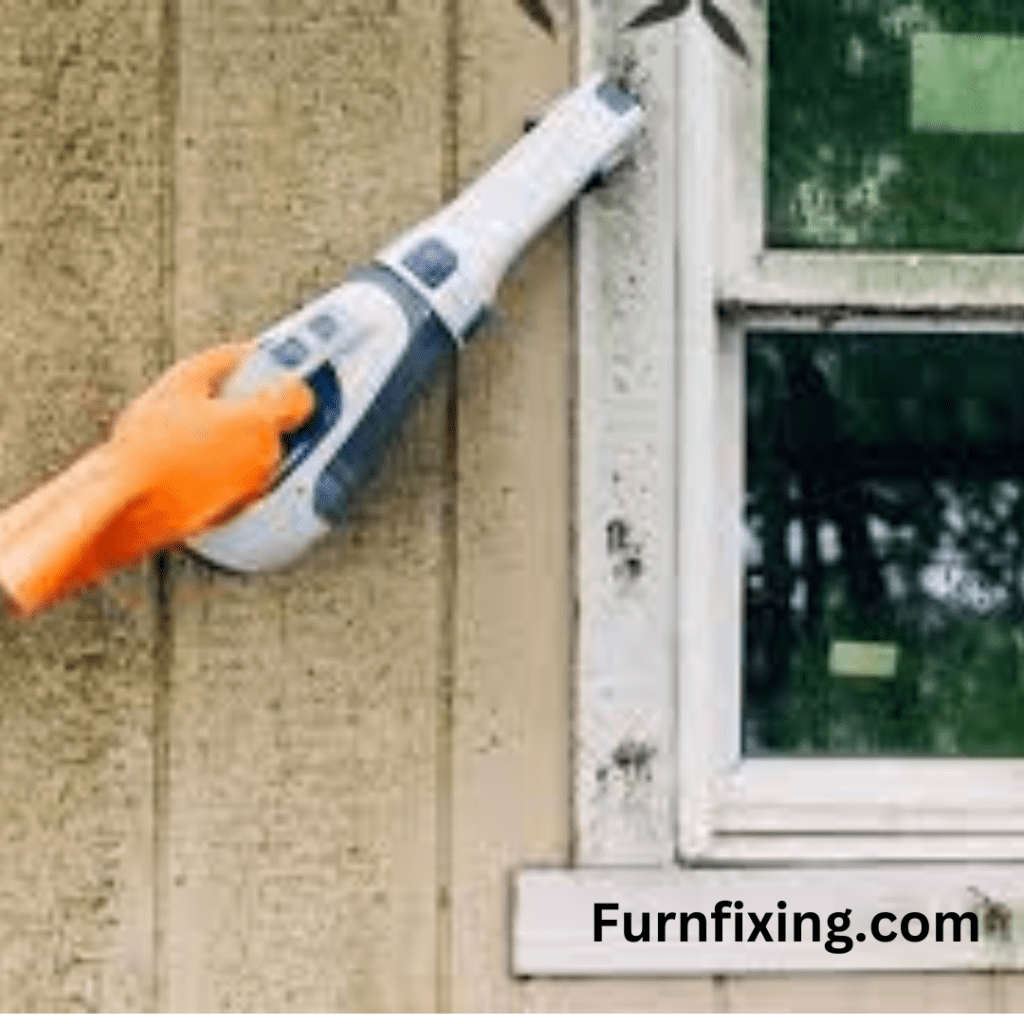
Once the area is vacuumed, immediately remove the vacuum bag and seal or clean the HEPA filter, following the manufacturer’s instructions. Dispose of the vacuumed contents in a tightly sealed plastic bag to ensure that mold spores cannot escape. This step helps reduce airborne mold spores, making the cleaning process more effective and safer for your home environment. Vacuuming is an important step in mold removal, as it reduces the overall mold load before deep cleaning can begin.
3. Clean with Natural Solutions
Option 1: Vinegar Solution
Vinegar is a powerful and environmentally friendly option for removing mold from wood. Its natural acidity kills most types of mold without damaging the wood. To use it, pour undiluted white vinegar into a spray bottle and apply it directly to the moldy area.
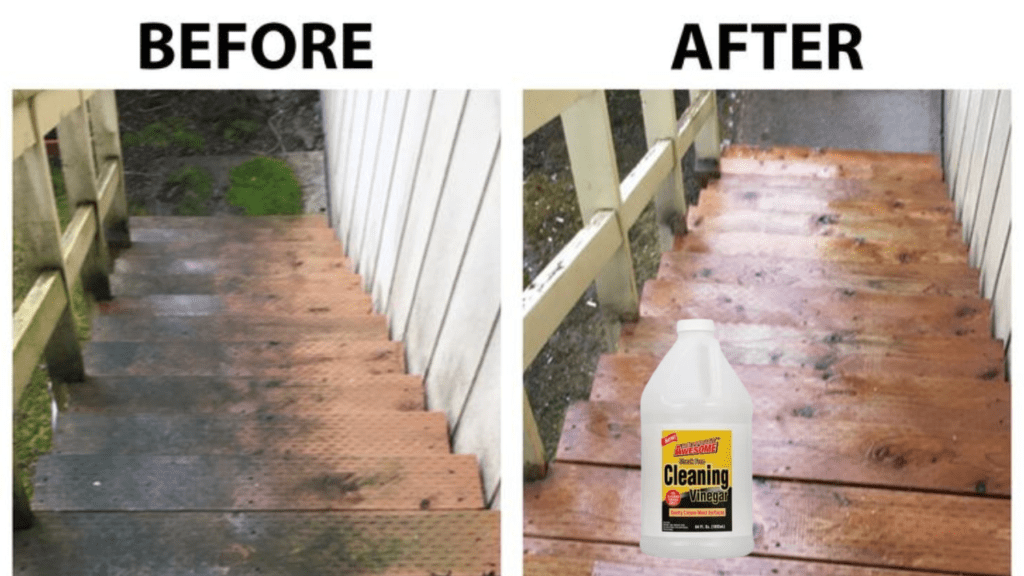
Let the vinegar sit for about 10-15 minutes so that it can effectively break down the mold. Then, use a soft cloth or brush to gently scrub the surface and remove the mold. After cleaning, wipe the area with a damp cloth to remove any residue, and let the wood dry completely. This simple method not only eliminates the mold, but also helps prevent it from returning.
Option 2: Baking Soda Solution
Baking soda is a gentle yet effective solution for removing mold from wood, especially for those looking for a non-toxic option. Its natural antifungal properties help kill mold while being safe for both the wood and your health.
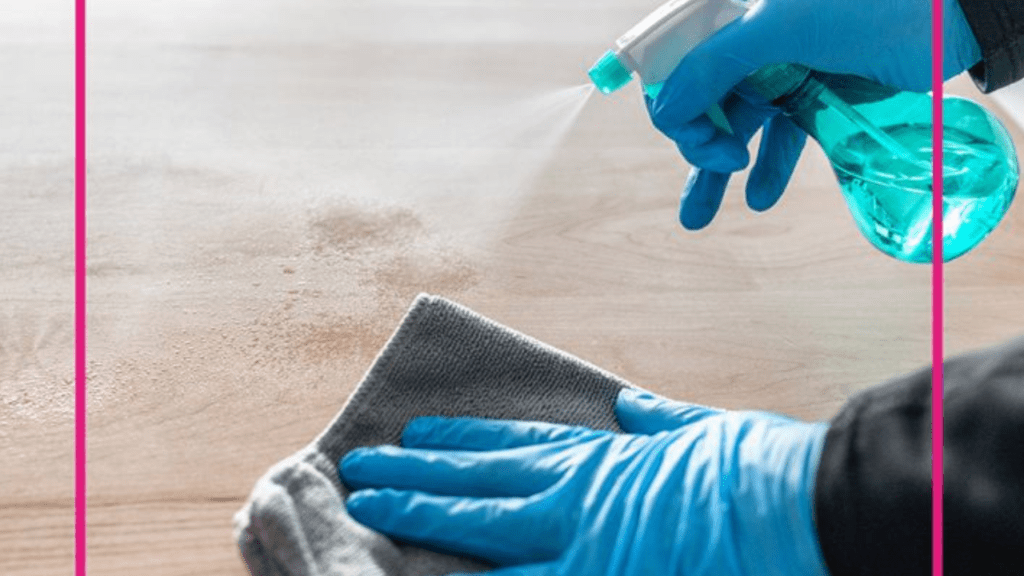
To prepare the solution, mix 1 tablespoon of baking soda with 1 cup of water in a spray bottle and shake well. Apply the solution to the moldy surface by spraying it evenly, then allow it to sit for a few minutes to loosen the mold. Use a soft brush or cloth to gently scrub the area and remove the mold.After cleaning, wipe the surface with a damp cloth to remove residue, then lightly reapply the baking soda solution and leave it to dry. This final step helps prevent future mold growth, as the baking soda creates an environment that prevents mold from thriving.
Option 3: Hydrogen Peroxide (3%)
Hydrogen peroxide is a powerful and affordable solution for dealing with mold on wood. Its antifungal and antibacterial properties make it effective at killing mold while being less harsh than bleach. To use, pour 3% hydrogen peroxide into a spray bottle and apply it to the moldy area. Let it sit for 10-15 minutes, allowing it to penetrate the mold and break it down.
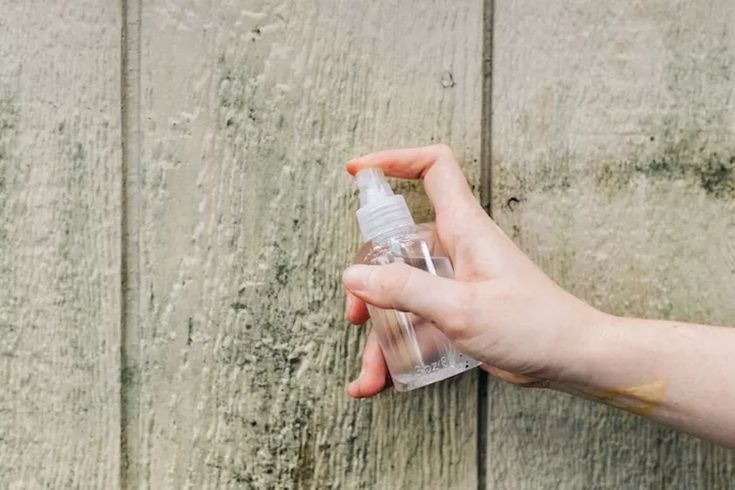
Then, gently scrub the surface with a soft brush or cloth to lift the mold. Once the mold is removed, wipe the area with a damp cloth to remove any residue, and let the wood dry completely. Hydrogen peroxide not only removes mold but also disinfects the surface, ensuring a clean and safe environment.
Dry the Area Thoroughly
Drying the wood thoroughly after cleaning is an important step in preventing mold from returning. Moisture is the primary cause of mold growth, so it is important to make sure the wood is completely dry. Use a clean, dry cloth to remove excess moisture immediately after cleaning. Then, improve air circulation by placing fans near the cleaned area or opening windows to let in fresh air. For larger items or areas, a dehumidifier can be used to speed up the drying process, especially in humid environments.
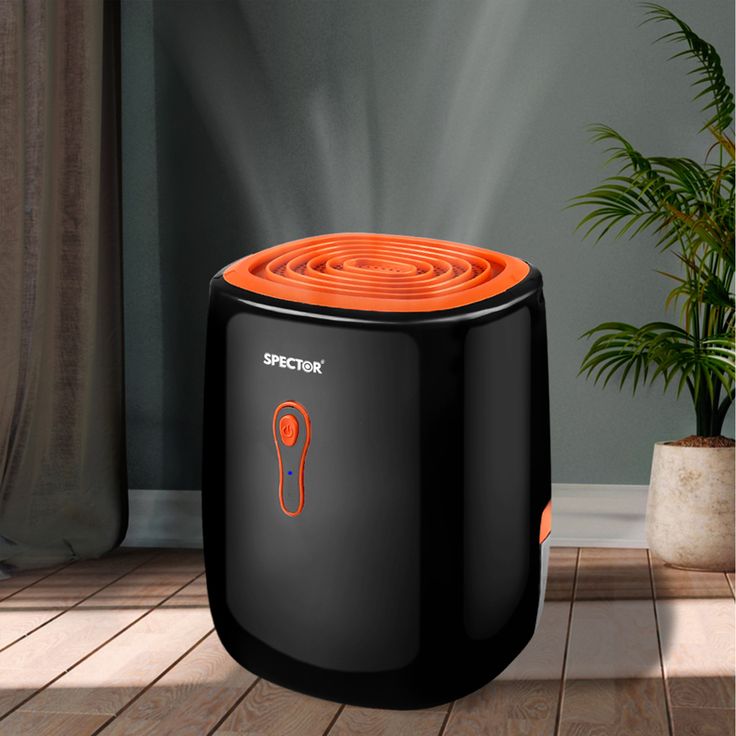
If possible, expose the wood to direct sunlight, as UV rays can help kill any remaining moisture and mold spores. Avoid reusing the wood or placing it back in a damp location until you are sure it is completely dry. This step ensures that the mold is effectively removed and reduces the risk of future growth.
Sand the Wood (If Necessary)
If mold stains persist after cleaning or if the mold has penetrated deeply into the wood, sanding may be necessary to restore the surface. Use fine-grit sandpaper to gently sand the affected area, removing any remaining mold or discoloration.Take care to sand lightly and evenly to avoid causing any damage to the wood. Always wear protective gear, including a mask and goggles, to prevent breathing in mold spores or fine wood particles during the process. After sanding is complete, vacuum the area with a HEPA-filtered vacuum to remove dust and mold debris. Next, wipe the surface with a damp cloth to ensure it is clean before applying a protective finish, such as a mold-resistant sealant, to help prevent future growth. Sanding is a last resort but can be extremely effective in restoring the appearance and integrity of mold-affected wood.
Preventing Mold Growth on Wood
- Keep humidity levels below 50%.
- Use dehumidifiers and ensure proper ventilation.
- Fix water leaks and spills promptly.
- Clean and inspect wooden furniture or structures regularly.
- Apply mold-resistant sealant or paint on wooden surfaces.
When to Call a Professional
- If mold covers a large area (e.g., >10 square feet).
- If mold is deeply embedded into the wood.
- If you experience mold-related health issues.
Conclusion
Removing mold from wood is essential to maintaining the beauty, durability, and safety of your home. By understanding the causes of mold, using effective cleaning methods like vinegar, baking soda, or hydrogen peroxide, and taking precautions, you can prevent further damage to your wood surfaces. Remember to dry the area thoroughly and apply a protective seal to prevent mold from returning. Addressing mold problems promptly not only protects your property but also ensures a healthy living environment for you and your family.
If you found this guide helpful, share it with others who may be dealing with mold issues.

